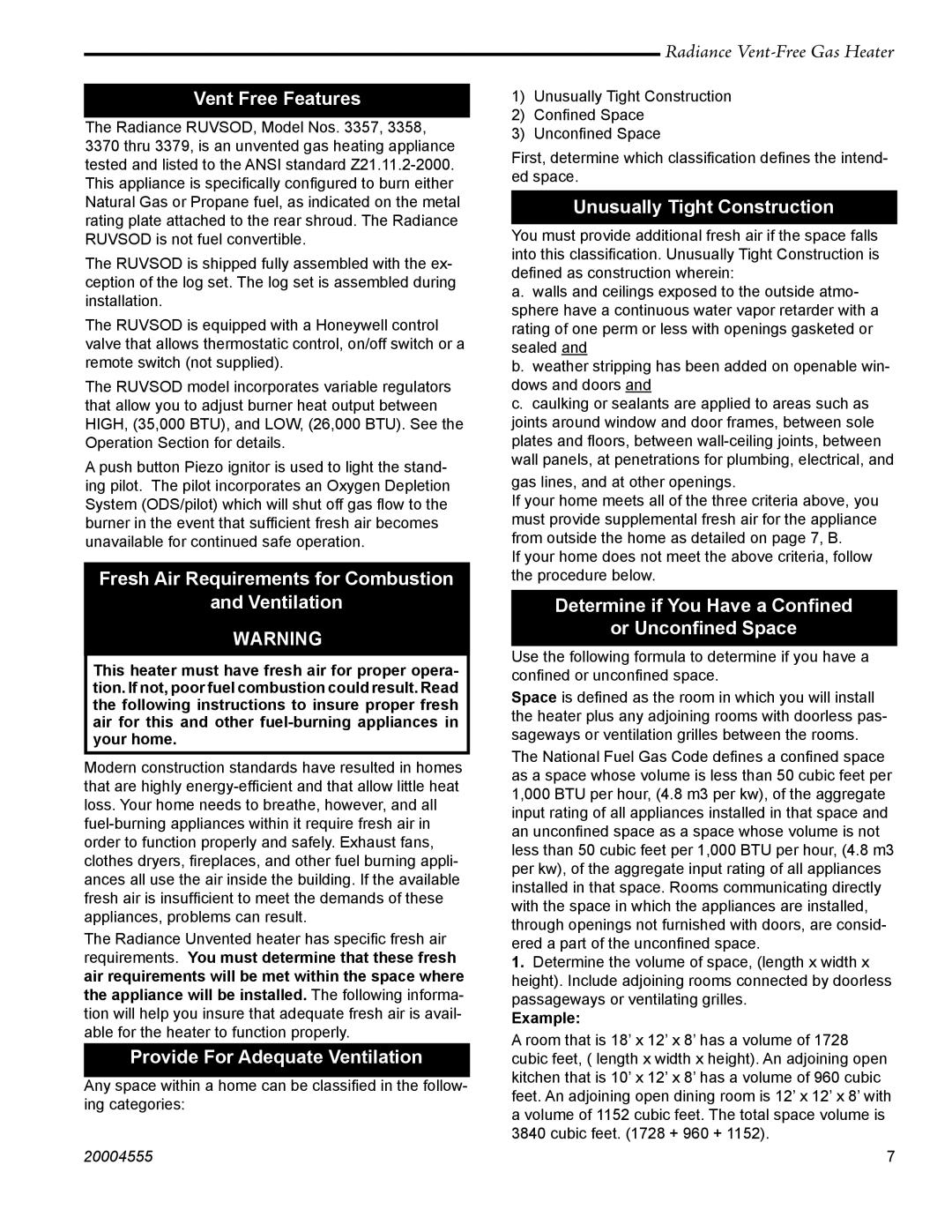3358, RUVSOD: 3357, 3370, thru 3379 specifications
Vermont Casting's RUVSOD series, comprising models 3357, 3358, 3370, and 3379, is widely recognized for its exceptional performance and timeless design. These wood stoves are crafted from durable cast iron, ensuring longevity and optimal heat retention. Each model in the RUVSOD line showcases Vermont Casting's commitment to quality, efficiency, and aesthetic appeal.One of the key features of the RUVSOD series is its remarkable efficiency. With an EPA-certified efficiency rating, these stoves are designed to maximize heat output while minimizing emissions. Users can enjoy a clean-burning fire that not only warms their space but also meets environmental standards. This efficiency is complemented by advanced technologies such as secondary combustion and catalytic converters, which enhance combustion processes and further reduce smoke and particulate emissions.
The RUVSOD models also come equipped with Vermont Casting's unique AirWash system. This innovative feature helps keep the glass door clean, allowing users to enjoy an unobstructed view of the flames. Additionally, the stoves in this series feature a customizable design, allowing consumers to choose from an array of colors and finishes that suit their interior decor. The stylish look of each stove adds a touch of elegance to any living space.
Another standout characteristic of the RUVSOD models is their user-friendly controls. An easy-to-use draft control system makes it simple to adjust the heat output and burn rate according to individual preferences. This ensures that users can maintain a comfortable and cozy atmosphere in their homes throughout the colder months.
In terms of heating capacity, these models can efficiently warm homes of various sizes, which makes them versatile for both small and large spaces. Their high heat output combined with long burn times ensures that users can enjoy hours of continuous heat without the need for frequent refueling.
In summary, the Vermont Casting RUVSOD series—models 3357, 3358, 3370, and 3379—represents the perfect blend of performance, style, and efficiency. With features such as advanced combustion technology, a customizable aesthetic, user-friendly controls, and impressive heating capabilities, these wood stoves stand as a premier choice for those looking to enhance their living space with an effective and attractive heating solution.

